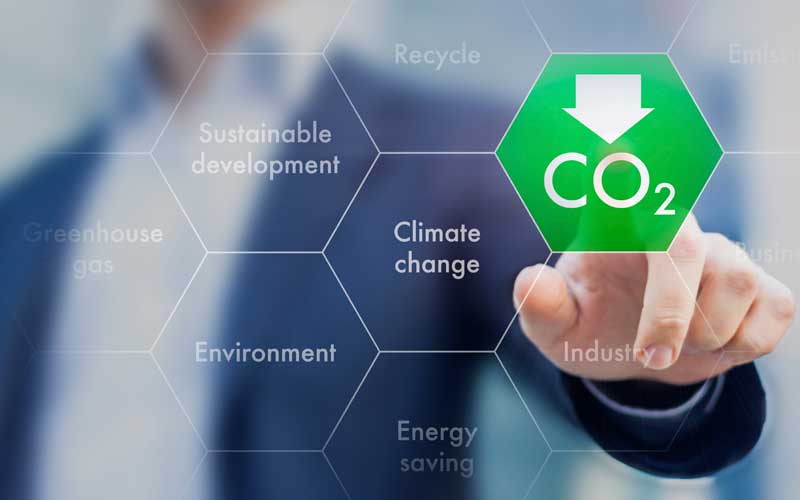
Carbon pricing programs must further state mandatory climate targets, involve voices from environmental justice populations in decision-making, and re-invest funds back into clean energy. Photo: NicoElNino/IStock
A previous version of this blog was published in August, 2017
With the federal government stymied over any meaningful climate legislation, it’s up to the states to take the lead on curbing carbon pollution. Here in New England, such leadership is nothing new. Five New England states have climate laws in the books, mandating cuts to polluting emissions as early as 2030. And all six New England states have been part of the nation’s first cap-and-trade program since its launch in 2009.
Washington’s failures only shine the spotlight more brightly on local action, and climate activists and everyday citizens are rising to the challenge. One legislative approach being put forward to lower climate-damaging emissions is carbon pricing.
And, while carbon pricing holds promise as one strategy for lowering carbon pollution, it also comes with risks that we must be vigilant in avoiding.
What is Carbon Pricing?
The concept behind carbon pricing is simple. Each time we burn fossil fuels and release greenhouse gases, it has a measurable effect on the world around us. More greenhouse gases in the air mean poorer air quality, higher temperatures, rising sea levels, and countless other dangerous consequences right where we live – in other words, climate change.
Every ton of carbon dioxide we spew into the air costs us, from negative health effects to environmental destruction, and more. Yet none of these costs are factored into the price of gasoline for our cars, for example, or the oil and natural gas we use to heat our homes.
Carbon pricing brings the price of fossil fuels more in line with their true cost to our environment, economy, and health.
Carbon Pricing Lowers Damaging Emissions
We already know that well-designed carbon pricing works to curb carbon pollution. In the Canadian province of British Columbia, carbon pricing helped to reduce climate-damaging emissions without harming business growth.
CLF also helped push for the creation of the first carbon pricing program in the U.S., the Regional Greenhouse Gas Initiative, or RGGI. This program created a carbon market for electricity producers in New England, as well as Delaware, Maryland, Virginia, New Jersey, and New York. Power producers across the region now pay and trade for the right to emit specific amounts of carbon dioxide, the greenhouse gas primarily responsible for climate change. Since RGGI’s implementation, the states involved have seen a reduction in greenhouse gas emissions while continuing to experience economic growth.
Another initiative, modeled after RGGI, uses a slightly modified carbon pricing system to cut emissions from transportation – the single, largest source of carbon pollution in New England and the nation. The Transportation and Climate Initiative (“TCI”) is a regional program expected to slash 25% of climate-warming emissions from transportation while also raising $3 billion to be invested back into clean transportation projects.
While RGGI and TCI serve as models for carbon pricing, they are not without their risks and shortcomings, particularly related to continued pollution and impacts in communities that are historically disproportionately burdened with environmental hazards and climate threats.
What Should I Look Out for?
Recently, Connecticut Governor Lamont decided not to pursue the law necessary to implement TCI. Because of this, Massachusetts Governor Charlie Baker, who believed the plan would only work if multiple states participated, pulled out as well. And there has been no movement yet in Rhode Island.
You might have also heard about a carbon tax in federal climate legislation and policy stuck in Congress right now. As climate spending takes blow after blow, we may see a carbon tax program end up receiving the rare bipartisan support needed to pass both the House and the Senate.
While carbon pricing holds some promise for cutting emissions, we must make sure that any program (whether local or national) is well-designed and helps incentivize emissions reductions and protect vulnerable and historically overburdened populations.
The reality is carbon pricing can miss the mark if it excludes communities most vulnerable to the devastating impacts of climate change from the development and implementation of these programs and prevents them from receiving the programs’ climate, health, and economic benefits. That’s why models like RGGI and TCI are not perfect: These programs don’t consider environmental justice populations and the historical inequities that have been thrust upon them nearly as much as carbon pricing should.
CLF remains committed to working with state leaders and our community partners on effective and equitable carbon pricing. Our goal is to ensure any programs in question further state mandatory climate targets, involve voices from environmental justice populations in decision-making, and re-invest funds raised through the program back into clean energy.



